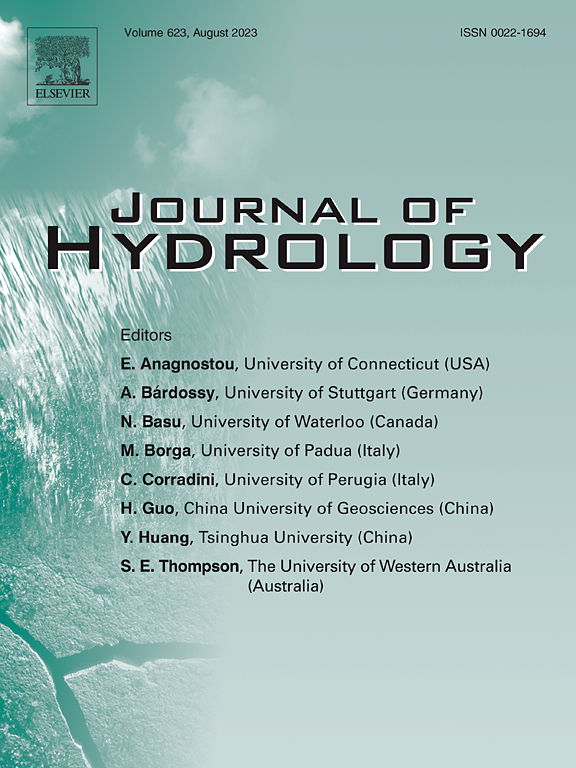Algal sensitivity and tolerance as key tools for validating organic pollution status in freshwater, detection of algal bioindicators
IF 6.3
1区 地球科学
Q1 ENGINEERING, CIVIL
引用次数: 0
Abstract
Anthropogenic activities driven by daily human needs are leading to increased accumulation of organic pollutants in water bodies. This study employed a multidirectional analysis to assess pollution levels using the Sensitivity Index and Palmer Index. The bioindicator detection was performed through integrating ADHPS (Algal Diversity in Highly Polluted Site— representing algal diversity in Uyyakondan Canal) and CCA (Canonical Correspondence Analysis) score selection with response to organic pollution. Organic pollution levels were evaluated by GC–MS analysis through total compound peak area [total organic compound area (TOCA) and total organic pollutant area (TOPA)] and also by total organic carbon (TOC) analysis. The CCA score selection is a novel method developed for identifying bioindicators such as Oscillatoria tenuis, O. limosa, Microcystis aeruginosa, Scenedesmus quadricauda, Euglena magnifica, and Nitzschia palea. Among the five sites representing a pollution gradient, Uyyakondan Canal (Site 5) showed the highest organic pollution, with Palmer Index scores of 29 and 24 (genus and species) and Sensitivity Index scores of 3. Sites 1 and 3 had significantly lower pollution levels based on indicator scores, GC–MS, and TOC analysis. Site 5 had high TOC (90.4 mg L–1) and elevated accumulation of pollutants such as dibutyl phthalate (DBP) and bis(2-ethylhexyl) phthalate (DEHP). Pearson correlation showed a strong inverse relationship for the Sensitivity Index (r ≥ -0.95, p ≤ 0.012) and a marginally significant correlation for the Palmer Index (r ≤ 0.94, p ≤ 0.055), both in relation to pollution. Stepwise regression also confirmed the Sensitivity Index as a better predictor. Although the study includes 50 sampling locations across five sites, covering a range from unpolluted to heavily polluted waters, the findings are geographically confined to the Tiruchirappalli region of Tamil Nadu, India.

藻类的敏感性和耐受性是验证淡水中有机污染状况,检测藻类生物指标的关键工具
由人类日常需要驱动的人为活动导致水体中有机污染物的积累增加。本研究采用多方向分析方法,以敏感度指数及帕尔默指数评估污染程度。将ADHPS (Algal Diversity in Highly pollution Site -代表Uyyakondan Canal藻类多样性)和CCA (Canonical Correspondence Analysis)评分选择与有机污染响应相结合,进行生物指标检测。通过总复合峰面积[总有机化合物面积(TOCA)和总有机污染物面积(TOPA)]和总有机碳(TOC)分析,采用气相色谱-质谱法评价有机污染水平。CCA评分选择是一种新的生物指标识别方法,如细纹振荡菌、O. limosa、铜绿微囊藻、四轴线虫、大叶藻和古氏Nitzschia。5个污染梯度样点中,乌亚康丹运河(样点5)有机污染最严重,帕尔默指数(属和种)分别为29和24,敏感性指数为3。根据指标得分、GC-MS和TOC分析,站点1和3的污染水平明显较低。5号站点TOC含量高(90.4 mg L-1),污染物如邻苯二甲酸二丁酯(DBP)和邻苯二甲酸二(2-乙基己基)酯(DEHP)的积累量增加。Pearson相关性显示敏感性指数(r≥-0.95,p≤0.012)与Palmer指数(r≤0.94,p≤0.055)呈显著负相关,两者均与污染有关。逐步回归也证实敏感性指数是一个更好的预测指标。虽然这项研究包括了五个地点的50个采样点,覆盖了从未污染到严重污染的水域,但研究结果在地理上仅限于印度泰米尔纳德邦的蒂鲁奇拉帕利地区。
本文章由计算机程序翻译,如有差异,请以英文原文为准。
求助全文
约1分钟内获得全文
求助全文
来源期刊

Journal of Hydrology
地学-地球科学综合
CiteScore
11.00
自引率
12.50%
发文量
1309
审稿时长
7.5 months
期刊介绍:
The Journal of Hydrology publishes original research papers and comprehensive reviews in all the subfields of the hydrological sciences including water based management and policy issues that impact on economics and society. These comprise, but are not limited to the physical, chemical, biogeochemical, stochastic and systems aspects of surface and groundwater hydrology, hydrometeorology and hydrogeology. Relevant topics incorporating the insights and methodologies of disciplines such as climatology, water resource systems, hydraulics, agrohydrology, geomorphology, soil science, instrumentation and remote sensing, civil and environmental engineering are included. Social science perspectives on hydrological problems such as resource and ecological economics, environmental sociology, psychology and behavioural science, management and policy analysis are also invited. Multi-and interdisciplinary analyses of hydrological problems are within scope. The science published in the Journal of Hydrology is relevant to catchment scales rather than exclusively to a local scale or site.
 求助内容:
求助内容: 应助结果提醒方式:
应助结果提醒方式:


